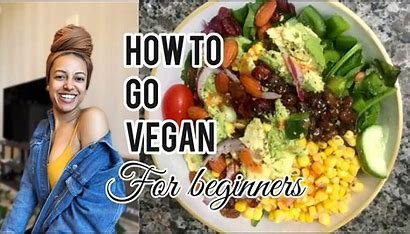Veganism is a lifestyle that excludes all animal products, including meat, dairy, eggs, and honey. It focuses on plant-based foods and often extends beyond diet to avoid animal-derived products in clothing, cosmetics, and other areas.

Health Benefits
- Nutrient-Rich: A well-planned vegan diet is rich in essential nutrients such as fiber, vitamins, and minerals.
- Heart Health: Vegan diets are typically lower in saturated fats and cholesterol, which can benefit heart health.
- Weight Management: Many people find it easier to manage their weight on a vegan diet due to the high fiber content and lower calorie density of plant-based foods.
Key Nutrients to Focus On
- Protein: Include sources like beans, lentils, tofu, tempeh, seitan, and quinoa.
- Iron: Obtain iron from foods like spinach, lentils, chickpeas, and fortified cereals. Pair with vitamin C-rich foods to enhance absorption.
- Calcium: Consume calcium-fortified plant milks, tofu, almonds, and leafy greens.
- Vitamin B12: Since B12 is not naturally found in plant foods, consider fortified foods or a supplement.
- Omega-3 Fatty Acids: Include flaxseeds, chia seeds, walnuts, and algae-based supplements.
Practical Tips for Transitioning
- Start Slow: Gradually eliminate animal products and introduce more plant-based options into your diet.
- Learn to Read Labels: Look for hidden animal-derived ingredients in packaged foods.
- Explore New Recipes: Try new vegan recipes to keep your meals exciting and diverse.
- Find Substitutes: Discover plant-based alternatives for your favorite animal products, such as plant milk, vegan cheese, and meat substitutes.
- Stay Informed: Educate yourself on vegan nutrition to ensure you’re meeting your dietary needs.
Sample Meal Plan
Breakfast:
- Smoothie with spinach, banana, berries, and almond milk.
- Oatmeal topped with nuts, seeds, and fresh fruit.
Lunch:
- Quinoa salad with chickpeas, cucumber, tomatoes, and tahini dressing.
- Veggie wrap with hummus, spinach, bell peppers, and avocado.
Dinner:
- Stir-fry with tofu, broccoli, bell peppers, and a soy-ginger sauce served over brown rice.
- Lentil curry with spinach and sweet potatoes served with quinoa or rice.
Snacks:
- Fresh fruit, nuts, and seeds.
- Carrot sticks with hummus.
- Vegan yogurt with granola.
Further Resources
- Books: “How Not to Die” by Dr. Michael Greger, “Vegan for Everybody” by America’s Test Kitchen.
- Websites: Vegan Society, NutritionFacts.org.
